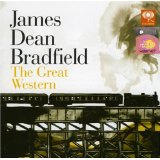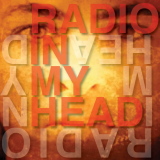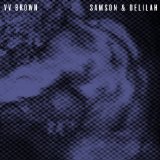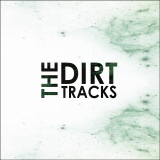 Just in case anyone hadn’t realised, I’ve loved the Manics almost from day one. From the first time I heard “Slash ‘n’ Burn”, I was hooked and I’ve never heard anything since that came remotely close to unhooking me. I loved the Richey-period Manics because of Richey’s lyrics and James’s voice, playing and ability to write a memorable tune and I didn’t skip a beat when Nicky Wire took over as main lyricist for the band. He’s a gifted writer and he has an opinion or two; I like that.
Just in case anyone hadn’t realised, I’ve loved the Manics almost from day one. From the first time I heard “Slash ‘n’ Burn”, I was hooked and I’ve never heard anything since that came remotely close to unhooking me. I loved the Richey-period Manics because of Richey’s lyrics and James’s voice, playing and ability to write a memorable tune and I didn’t skip a beat when Nicky Wire took over as main lyricist for the band. He’s a gifted writer and he has an opinion or two; I like that.
So, in 2006, when James Dean Bradfield released his solo album “The Great Western”, I couldn’t wait to get my hands on a copy. I loved it the album the first time I listened to it and I still love it every time I listen to it. The highest chart position it reached (with minimal promotion) was 22, and that puts it firmly in Closet Classic territory. Oh, and my favourite mondegreen is on this album, but I’ll tell you about that later.
So why would a songwriter in a commercially successfully and critically-acclaimed band want to release a solo album? Well, the Manics have always been big on the manifesto songs but, with a few exceptions (including “Life Becoming a Landslide” and “Ocean Spray”), they’ve not really done the personal, apolitical and introspective thing. If you’re a songwriter as prolific as James, you’re always going to have a bunch of great songs that just won’t work on any band album. When you listen to “The Great Western”, you realise that it would be criminal not to get these songs out there.
I love an album that opens with a big guitar riff and “The Great Western” certainly ticks that box; throw in some handclaps as well on the intro to “That’s No Way to Tell a Lie” and you’ve got my attention from the first four bars (it was even used on “Match of the Day”, so full marks to that BBC researcher). The production on the album is generally Spectoresque wall-of-sound, with the exception of the beautiful minimalist acoustic Jacques Brel cover “To See a Friend in Tears” and the final song “Which Way to Kyffin” which references Laurie Anderson’s “O Superman”, and James has great fun with all of the melodic invention, layers of acoustic and electric guitars and completely over-the-top backing vocals that you would never hear on a Manics record (ok, maybe on “Everything Must Go”).
Lyrically, the album generally looks backwards to the early days of the Manics, life in the valleys in the 1980s and moving away from that life. “An English Gentleman” is a tribute to the band’s first publicist, Philip Hall, “Say Hello to The Pope” and “Bad Boys and Painkillers” (the only song on the album co-written with Nicky Wire) look back to life in Blackwood, and “Emigré” deals with the conflict created by leaving your roots to pursue your dreams. “Still a Long Way to Go” sounds a lot like a prequel to the highly personal “Ocean Spray” and “Run Romeo Run” has a chorus to rival anything that made it on to a Manics record.
Anyone with a pair of ears knows that James Dean Bradfield can write a great tune (and you can ask Shirley Bassey about that) but “The Great Western” proves that he’s a gifted lyricist and a talented producer as well. Seven years after I bought this album, I still love to listen to it and I’m convinced that James had a huge amount of fun putting the whole thing together. I suspect it was bought almost exclusively by Manics fans and that’s a bit of a shame really because this is a superb bunch of songs and it’s eclectic, well-crafted, well-performed and well-produced.
And what about that mondegreen? After hearing “On Saturday Morning We will Rule the World” many, many times I was still confused by a line that I heard as “A book of Brie and a telephone” until I finally realised that it was “A Ford Capri and a telephone”, which is ironic given that I’ve spent the last ten years living as an emigré a couple of miles from the old Ford complex in Dagenham.
Even if you’re not a fan of the Manic Street Preachers, put your prejudices to one side and listen to an album that absolutely fizzes with emotion and musical and lyrical invention. What more could you possibly want?
 OK, the cat’s at least halfway out of the bag now so I suppose it’s about time we gave you a bit more gen on the Radio (in my) Head album. The project was conceived a few years ago by Bandhouse Records MD John O’Sullivan as a college project at the London College of Contemporary Music. He realised that Radiohead songs were a common frame of reference for musicians from all over the world and that every musician seemed to have an interesting take on a Radiohead song (although, personally speaking, I draw the line somewhere short of Brad Mehldau). By 2012, the college project was completed, but the concept wouldn’t lie down; John had graduated from LCCM and started up the Bandhouse organisation, working with fellow alumni and new contacts on the London music scene.
OK, the cat’s at least halfway out of the bag now so I suppose it’s about time we gave you a bit more gen on the Radio (in my) Head album. The project was conceived a few years ago by Bandhouse Records MD John O’Sullivan as a college project at the London College of Contemporary Music. He realised that Radiohead songs were a common frame of reference for musicians from all over the world and that every musician seemed to have an interesting take on a Radiohead song (although, personally speaking, I draw the line somewhere short of Brad Mehldau). By 2012, the college project was completed, but the concept wouldn’t lie down; John had graduated from LCCM and started up the Bandhouse organisation, working with fellow alumni and new contacts on the London music scene.
But the expansion didn’t stop there; the internet (particularly Soundcloud and social media sites) enabled the project to become truly global with contributions coming from eleven bands and/or producers from (wait for it) Italy, Serbia, Russia, Israel, USA, Ireland, France, South Africa, Colombia, South Korea, Norway, Iceland, India, Singapore and Estonia (and good old Blighty). I make that eleven tracks put together by contributors from sixteen countries. I think that pretty much ticks the world music box.
I heard a few whispers about this project just over a year ago and that says a lot about how long it takes to get something like this together. John got the official Radiohead seal of approval for the project at about this time last year, but the whole process of mastering, tying up all of the legal and publishing loose ends and generally giving the project the final polish it so richly deserves takes time, so here we are in September 2013 with the first single released and the album almost ready to go.
I really wish I could tell you more about the album at this stage but most of it’s still very tightly under wraps apart from Ido Livni and Re’ut Szekely’s cover of “Videotape” which was released today on iTunes. What I will say is that I’ve heard pre-master versions of several songs and they’re all very, very good. We’ve reviewed live and recorded material from several artists involved in the project here at MusicRiot and we can’t wait to hear their contributions.
We’ll have more news for you about this intriguing album very soon.
 I know we’ve been teasing you with this for a year now but we’ve finally got a release date for the first single from the Radio (in my) Head project and the album’s on its way fairly soon as well. The concept was initiated by the founder of Bandhouse Records, John O’Sullivan, as a college project at the London Centre of Contemporary Music and quickly spiralled out into an album featuring artists from across the globe. But we’ll tell you more about that when the album’s released.
I know we’ve been teasing you with this for a year now but we’ve finally got a release date for the first single from the Radio (in my) Head project and the album’s on its way fairly soon as well. The concept was initiated by the founder of Bandhouse Records, John O’Sullivan, as a college project at the London Centre of Contemporary Music and quickly spiralled out into an album featuring artists from across the globe. But we’ll tell you more about that when the album’s released.
The lead single is Israeli producer Ido Livni’s collaboration with singer Re’ut Szekely on the 2007 “In Rainbows” track “Videotape”, which is backed on the single by “Untimely Storm”, a collaboration with Maria Gutman, Ori Livni and Tal Alagim. Incredibly, Ido is only eighteen although most of the work on these tracks was done when he was seventeen.
So how does this version compare with the original? The Radiohead version is built around traditional instruments (piano and bass mainly), but Ido’s version is a purely electronic and very percussive backing track full of squelchy analogue synth sounds and very heavy bass underpinning Re’ut’s sultry and soaring vocals. The only rule I enforce with cover versions is that you make the song your own and Ido and Re’ut certainly do that with “Videotape”. And the “B” side’s pretty good as well. After a bit of a gimmicky start, “Untimely Storm” settles down into a trip-hoppy groove with a distinctive vocal and that’s good enough for me.
You’ll hear much more about the Radio (in my) Head album over the next few weeks, but this is a pretty good start. Watch out for more news here.
 VV Brown’s second album opens with two songs that share Madonna titles but aren’t cover versions. “Substitute for Love” and “Nothing Really Matters” were two of the singles taken from the ultimate Madonna make-over album and mid-career return to form, 1998’s “Ray of Light”. Unhappy with the r’n’b follow up to “Bedtime Stories” (an r’n’b influenced collection itself), Madonna scrapped the entire sessions and hired electrohead, Brit, William Orbit, started calling herself Veronica Electronica and the rest is pop cultural history. Albeit on an entirely different scale, VV Brown has followed Madonna’s lead. About to release her follow up to the successful but underwhelming “Travelling at the Speed of Light” debut, Brown decided the hip hop and r’n’b-dominated follow up, a departure indeed from the nostalgic pop doo-wop of her debut, was not authentic and she walked away from the project and the album was never released. Two years on and as many career changes later she has returned with eleven angry, desolate and soulful songs set against a unsettling, uncompromising soundtrack and it is a startling reinvention indeed.
VV Brown’s second album opens with two songs that share Madonna titles but aren’t cover versions. “Substitute for Love” and “Nothing Really Matters” were two of the singles taken from the ultimate Madonna make-over album and mid-career return to form, 1998’s “Ray of Light”. Unhappy with the r’n’b follow up to “Bedtime Stories” (an r’n’b influenced collection itself), Madonna scrapped the entire sessions and hired electrohead, Brit, William Orbit, started calling herself Veronica Electronica and the rest is pop cultural history. Albeit on an entirely different scale, VV Brown has followed Madonna’s lead. About to release her follow up to the successful but underwhelming “Travelling at the Speed of Light” debut, Brown decided the hip hop and r’n’b-dominated follow up, a departure indeed from the nostalgic pop doo-wop of her debut, was not authentic and she walked away from the project and the album was never released. Two years on and as many career changes later she has returned with eleven angry, desolate and soulful songs set against a unsettling, uncompromising soundtrack and it is a startling reinvention indeed.
Samson & Delilah is released on VV Brown’s own YOY record label so it can assumed that this is what she wants to sound like now with little or no interference from outside parties, and that is remarkable. The aforementioned “Substitute For Love” opens in much the same way as the Madonna track opens “Ray of Light”, gently twinkling notes and ambient synths introduce Brown’s incredible voice which is now several tones lower; a contralto to rival Grace Jones and she sounds magnificent throughout. A dominant all-electronic backing that is somewhere between The Knife circa “Silent Shout” and Massive Attack at their most austere ( think “Sly”) with a mound of sticky dubstep coating the astounding, warrior-like, “Igneous”. It isn’t easy listening and the mood is pitch-black; a couple of songs like the title track can struggle to stand out when the melody is forsaken for a mood but these are minor niggles.
“The Apple”, by some distance the most instant and accessible track here, sounds amazing. Its rolling, funking electro pop assertiveness is magical and Brown has huge fun with the relentless put-downs that lyrically dominate: ‘Don’t testify me, don’t bring me down, don’t hold me captive, you’re not the apple of my eye you see’. “Nothing Really Matter” is a swirling, sombre and sharp-edged synth monster which would have sounded at home on Adult’s last album, VV Brown never before having hinted at this unlikely and inspired direction.
“Faith”, track eight of eleven, finally allows a chink of light to spill through and is more lifting sonically and melodically than anything preceding it. A duet with an uncredited male, it quietly references George Michael and with its theme of rebirth (‘I shake it off as I fall down to the ground, I belly flop into a swimming pool of sound, so you got to have faith’ ) and hope and a melody that will stick for days, it’s one of the strongest and most soulful songs here. “Ghosts”, in which Brown’s vocals spectacularly morph into 80’s singer songwriter Joan Armatrading, continues with similar themes and benefits from some simple but brilliantly constructed vocal effects over a droning organ and tight drum machines.
The album ends with two tracks which bring to mind a singer/songwriter who is now an almost-cliched reference point for artists and music fans alike. I’m loath to point out the similarities in the songwriting between that of the haunting “Knife” and Kate Bush’s “This Woman’s Work” and the foggy, suffocating album closer “Beginning”, which sounds like a lost track from Bush’s “Ninth Wave” concept album which formed the second part of ‘Hounds of Love’. These aren’t parodies though, as is often the case, they are very well crafted compositions from an artist who may or may not be familiar with Bush’s work (I suspect the former) and to draw such genuine comparisons is a compliment indeed.
“Samson & Delilah” never goes too far, gets too crazy or attention-seeking. The measured and meticulous tone and pacing of this album is a very large part of its success. VV Brown will have her work cut out for her when it comes to the initial promotion of this admittedly difficult album (for such a visual artist she has made the odd decision to hardly feature in the videos for the first two singles) and many will not make the connection between the Marks and Spencer model and former pop star and Brown’s current, definitive form. Twelve months down the line though, and many people will have hopefully been exposed to this album while having no idea who the artist is and it will become so something of a word-of-mouth slow burner. By any standards, this is a heartfelt and bold collection and a testament to VV Brown’s self belief.
 So, what is it then? It’s indie Jim, but not as we know it. The Dirt Tracks is a Spanish band, writing and performing in English; you might have heard of them during their UK tour earlier this year and following the release of their third single “Kaleidoscope”. You might have seen some very lazy comparisons with a certain band from Oxford, but I’m not having any of that; there are many influences on show here and the “R” band is only one of those. What the band does very successfully is to pull together influences from a wide range of sources and eras and blend them with their own ideas to create sounds which are very definitely The Dirt Tracks.
So, what is it then? It’s indie Jim, but not as we know it. The Dirt Tracks is a Spanish band, writing and performing in English; you might have heard of them during their UK tour earlier this year and following the release of their third single “Kaleidoscope”. You might have seen some very lazy comparisons with a certain band from Oxford, but I’m not having any of that; there are many influences on show here and the “R” band is only one of those. What the band does very successfully is to pull together influences from a wide range of sources and eras and blend them with their own ideas to create sounds which are very definitely The Dirt Tracks.
The Dirt Tracks line-up is almost a traditional rock/indie five-piece with the traditional keyboard being replaced by a couple of samplers providing beats and, well, samples. The combination of two guitars, melodic basslines and samplers allows the band to create a huge variety of textures and dynamics throughout the album. The construction of the songs and the quality of the playing are superb throughout the album and the band’s use of vocal harmonies is original and highly effective.
The opening track, “All Paths Cross”, is a perfect example of this, fading in with a string and keyboard sample before the lead vocal and then percussion build up layers of sound for nearly two minutes before breaking into the body of the song. And you get a reference to Pink Floyd’s “Breathe (In the Air)” which has to be intentional. This is followed by the brilliant but disorientating “Kaleidoscope”, which we reviewed as a single earlier this year. “Bit Train” is driven along by a dirty and distorted two-guitar riff which is closer to the Black Crowes than British indie and “Bloop” features two guitars and bass interweaving melody lines under a powerful vocal before morphing into a heavy metal break and several changes of tempo; it sounds great here, but it’s even better live. “Midline” is an interesting blend of indie and funk with and a lyric about escaping from the mundane world. Santiago Coma’s high tenor on this track vocal works perfectly with the guitar arrangements to create a relentless, driving feel which mirrors the theme of a life being forced down a certain predetermined track and the escape from that track.
“Astroblender” and “Pulse” are perfect examples of the way the band use their influences; the former breaks down into a guitar solo and choral section which wouldn’t sound out of place on the first Queen album, while the latter is pure Depeche Mode. “Up” is an atmospheric instrumental interlude leading into the sparse arrangement of “Unchanged”, which brings me to the only song that I don’t like on the album. “Self-Terrorism Manual” has a lo-fi production and, for me, the vocal just doesn’t work on the first two verses. Things improve after that, but I think the album would have been better without this song. The final song, “Another Way (to the Other Side)” takes the album out on a high with big guitars, vocals and harmonies.
There’s no doubt that The Dirt Tracks are something special; the band mixes up British indie with psychedelia, hard rock, samples and beats with great songs, innovative arrangements and a huge amount of energy. This is a very good debut album and it’s in my top five so far this year.
Physical release Monday September 30.
 Well, the good news is that now the festival season’s almost over, we’re starting to see a few good tours appearing. Riot Squad favourite Dean Owens has put together a mini-tour in support of his latest single, “I Still Miss Someone” from his superb album of Johnny Cash covers (and one Dean Owens original), “Cash Back”. If you go along to The Cabbage Patch gig in Twickenham, you may even bump into the Riot Squad. We’ll also have a review of “I Still Miss Someone” coming up in the next few weeks.
Well, the good news is that now the festival season’s almost over, we’re starting to see a few good tours appearing. Riot Squad favourite Dean Owens has put together a mini-tour in support of his latest single, “I Still Miss Someone” from his superb album of Johnny Cash covers (and one Dean Owens original), “Cash Back”. If you go along to The Cabbage Patch gig in Twickenham, you may even bump into the Riot Squad. We’ll also have a review of “I Still Miss Someone” coming up in the next few weeks.
Saturday October 5
Hazy Recollections (part of Glasgow Americana) CCA Glasgow
Friday October 25
Cafe Panola (Pentland Garden Centre), Loanhead nr Edinburgh
Saturday October 26
Friday November 1
Saturday November 2
Friday November 8
Caffe Borsa, Dundee
Saturday November 9 – Soundhouse No 42, Edinburgh
 Over the course of five albums, Goldfrapp have always depended on their plush, dreamy, slowed-down side. Although they have never had massive single success with this sound, public recognition coming instead from their exhibitionist, Schaffel-glam persona, it’s the one thing that is expected and can be depended upon whenever the duo release new material. A new track like the haunting, smoky “Ulla” for example could have also featured on their startling 2002 debut “Felt Mountain” without sounding out of place. “Tales of Us”, then, is an album full of these types of songs and arrangements; from start to finish the emphasis is on a quiet, wholly seductive and insidious power with only one track containing something resembling a ‘beat’. Because of this it may scare of a certain type of selective Goldfrapp fan; maybe a brave move on their part, then, but they can afford to take a risk when the quality is such that many more who may still have been undecided could now start to take notice.
Over the course of five albums, Goldfrapp have always depended on their plush, dreamy, slowed-down side. Although they have never had massive single success with this sound, public recognition coming instead from their exhibitionist, Schaffel-glam persona, it’s the one thing that is expected and can be depended upon whenever the duo release new material. A new track like the haunting, smoky “Ulla” for example could have also featured on their startling 2002 debut “Felt Mountain” without sounding out of place. “Tales of Us”, then, is an album full of these types of songs and arrangements; from start to finish the emphasis is on a quiet, wholly seductive and insidious power with only one track containing something resembling a ‘beat’. Because of this it may scare of a certain type of selective Goldfrapp fan; maybe a brave move on their part, then, but they can afford to take a risk when the quality is such that many more who may still have been undecided could now start to take notice.
This is the second time that Alison Goldfrapp and Will Gregory have made what can be lazily referred to as a ‘quiet album’, “Felt Mountain” being too eclectic and bizarre to truly fall into that category (yodelling anyone?). 2008’s “Seventh Tree” was a predominantly acoustic and gentle collection and, like “Tales of Us”, it followed an album that was more turntable than coffee table. It had its moments but was overwhelmingly dull, descended into musical pastiche on occasion and was two dimensional both lyrically and musically. It seemed to be pitching for a commercial equivalent of an electro-folk “Ooh La La” and, as may be expected, failed. It did include a couple of more uptempo synth pop songs (“Happiness” and, one of their best songs, “A&E”) which, interestingly, were the singles released during this era but “Tales of Us” does away with all of that completely and concessions to pop are entirely absent.
Ten tracks, all one-word titles and with the exception of one (the brilliant “Stranger” , the other track with a direct sonic reference to “Felt Mountain”), all are the first names of the person that the song is about. “Jo” opens the album in a widescreen, full-bodied manner; strings quiver and a double bass gently throbs with two repeated piano notes underscoring Alison Goldfrapp’s gorgeous mumbling, breathy vocal which suggest ominous circumstances and a circular threat of ‘run, you’d better run for your life’. With “Jo” it is immediately apparent that Gregory and Goldfrapp have expanded their vision and honed their craft. The songwriting in particular is supremely confident and intricate and has reached the point where, instead of lining up their influences for all to hear, Goldfrapp are finally sounding like themselves.
Many of the songs here and the characters that they represent are nocturnal and suggest dread and violence. “Laurel”, which is surprisingly and at first shockingly sung in a far lower register than Alison Goldfrapp’s usual impressive soprano ( at first I thought the vocal had been slowed down), talks about an angry man and a woman with red, red hair and almond eyes. You fear that this union is not a healthy one but no real outcome is suggested; like everything here, it does not concede to the melodramatic. The rhythmic, marching foot stomps of “Thea” refers to tiny knives cutting which describes the sound of the sampled string loop constantly threatening to rip the track to shreds but which never quite does. “Annabel” is simple and soars delicately, based on the book of the same name by Kathleen Winter about an intersex child, not that you could necessarily make that out from the lyrics as Goldfrapp’s words often blend together and form one long, sometimes indecipherable, sentence. This could be a problem with an album which is, albeit loosely, lyrically conceptual but moods are firmly established and in the songs where it is hard to work out what is being said the melody and Alison’s capacity to suggest more than adequately compensate.
“Drew”, the first single with a video full of joyful, naked ghosts, and “Clay”, the best song here, are in some ways the biggest departure for the duo, and two of the most compelling moments here. The only two male names are big, full songs, technically brilliant and both romantically tragic, incorporating the full orchestra used throughout the album in a very straightforward, traditional way. There could be a fear then that the two are going soft, politely polished with any kind of edge being thoroughly rubbed away, one of the most appropriate criticisms of “Seventh Tree” certainly. But a song like “Clay”, allegedly about two male soldiers’ secret love affair during the First World War (‘We fought them on grey wet sand…we wanted only to love, how will I find you again, fate or chance?’) is so thoroughly bold and vivid but also incredibly tender and moving. These are emotions rarely experienced whilst listening to their substantial back catalogue; it’s too self-possessed to ever be considered background.
Maybe the pair have matured then; “Tales of Us” is their sixth album after all and many (successful) flamboyant and playful musical styles and accompanying images have proceeded it. This album cover shows Alison dressed in black, head down; she doesn’t want to be seen. This is probably not the case; I would be surprised if Alison has hung up Studio 54 glitter platforms and cape for good, but it does seem that following their publicly admitted dissatisfaction with their last full length album, the crushingly self-aware “Head First”, that the irony and sometimes clunky visual tricks have been dispensed with and replaced by something that is altogether more pure. Of course one of the most interesting and exciting things about Goldfrapp is always to see what they will do next and at this point it would impossible to predict, for the moment though it is a joy to hear them at their most accomplished; sincere and full of soul.
I’ve got to say this; my end of year piece this year will be jam-packed with superlatives. I’ll have to give the thesaurus a hammering to avoid repetition because I’ve seen so many great gigs and heard so many great new albums this year. Carrie Rodriguez is easily in the top five live artists I’ve seen this year and her show at The Old Queens Head in Islington was the kind of warm, confident and intimate performance that only a true star can give.
The venue is perfect for this show; an upstairs room at a pub with a good sound system and just enough room for the appreciative and knowledgeable audience. From the start of the set, Carrie (singing, playing fiddle and the unusual tenor guitar) and her touring compadre Luke Jacobs (playing acoustic, electric and lap steel guitar and supplying beautiful vocal harmonies) gradually extend their intimate working relationship to include everyone in the audience. I was surprised by the number of stomp boxes on the stage but the two players used them with the same deft touch that they applied to their playing and vocals.
How do you describe Carrie’s genre? Country, folk, Americana, bluegrass, all of the above? I think it has to be the latter; it’s also obvious that Carrie is a very gifted writer and the show tonight is full of examples of that. She’s touring to promote her new album “Give Me All You Got” and the two sets lean fairly heavily on the new material interspersed with some old classics. The opener “Devil in Mind” showcases Carrie’s powerful voice alongside her wonderful fiddle playing. I’ve seen many country and folk fiddle players stamp one foot in time to the music, but never in two-inch platforms with a six-inch spike heel. The two sets are well-paced and the new songs are placed alongside old favourites although it doesn’t seem to matter because the audience seem to know all the songs anyway, old and new. There’s even a Luke Jacobs song on the Faust theme, “Oh Margherite” which follows the beautiful and poignant “Seven Angels on a Bicycle”.
It’s difficult to pigeonhole a performer like Carrie Rodriguez (and I’m not saying that’s a bad thing), because she does so many things so well, moving effortlessly from the pure country of “I Don’t want to Play House Anymore” to the riff-driven mystery and menace of “’50’s French Movie” and from the upbeat, uptempo “Lake Harriet” to the delicate beauty of “Get Back in Love” with its lovely subtle touches of lap steel. It’s easy to see why Carrie has a reputation as great fiddle player; she incorporates elements of classical, country, folk and even rock into her playing and has the knack of making the incredibly difficult look really simple. She also creates a very intimate atmosphere for the show, inviting the audience to be a part of the experience and breaking down the traditional barriers. There’s also genuine emotion when she talks about her good friend who was the subject of “Seven Angels…” and about her mother before playing “La Puñalada Trapera”. And all of this makes for a very warm and intimate live experience.
It may be a while before she’s back in the UK again, but you could always listen to the new album (or her previous albums); you won’t be disappointed.
 A remix album that surpasses the original recording is a rarity indeed. For a relatively small scale, indie electronic band like Ultraista it feels perfunctory to issue one at some point and along with contemporaries such as Au Revoir Simone and Lali Puna, as well as big hitters like Bjork and Lady Gaga, the thing they all have in common is wildly varying levels of success and are all too often the ultimate exercise in self- indulgence.
A remix album that surpasses the original recording is a rarity indeed. For a relatively small scale, indie electronic band like Ultraista it feels perfunctory to issue one at some point and along with contemporaries such as Au Revoir Simone and Lali Puna, as well as big hitters like Bjork and Lady Gaga, the thing they all have in common is wildly varying levels of success and are all too often the ultimate exercise in self- indulgence.
Ultraista’s self-titled album, from which the remixers all derive their source material, was released last October and considering the enticing concept of Thom Yorke’s right hand man, Nigel Godrich, making female vocal lead electronica, the actual reception was not entirely ecstatic. It was glitchy and introverted, not necessarily intended on occasion I’m sure and partly due to Laura Bettinson’s vocals often being quietly pushed back into the mix, which undermined the impact of some of the stronger melodies. The main problem of what is still an interesting and thoughtful album is that, apart for the trip (predominantly) hop of slowed down “Party Line”, it was an album with little variation of beat, rhythm or structure. This album then is the ideal companion piece, bringing out the necessary colour and bite.
All ten of the original songs get a new treatment and unlike many other remix excursions there aren’t six versions of one particular track leading to repetitive ear strain injury early on (there are additional versions on the digital version though), with the majority thankfully not exceeding the five minute mark. “Smalltalk (Four Tet)” may stutter and rattle enthusiastically but the melody which was previously implied but not exploited now shines through and “Party Line(Canon Blue)” brings Bettinson’s vocal out of hiding and makes it a tight, bright thrill; the same applies to the now delightfully menacing “Easier (Zammuto)”.
“Static Light”, always one of their strongest tracks, was originally swamped by synths and drones and now Matthew Herbert turns it into a buzzing, tumbling pop rush reminiscent of his more major production work with Bjork and Roisin Murphy. Oddly now becoming better known as a prolific remixer (how exactly did this happen?) than a film director, David Lynch brilliantly turns the averagely competent “Strange Formula” into a dusty and scuzzy blues drawl. “Bad Insect” and “Our Song” don’t fare as well, being overwrought drum and bass and blissed out coffee table respectively, but two out of ten ain’t bad.
In many ways a template for the successful remix project, Ultraista have proved that there is still life in what is a really a marketing tool if quality control is paramount and the DNA of the original material remains; this is certainly the case here. This collection is cohesive and thoughtfully complied and if it in fact had been released in this format, it might have succeeded in making a stronger impression than the original recordings themselves. As it stands, the remixers have done an exceptional job in exposing Ultraista as the dynamic, quietly foreboding band that they have the potential to be.
 Well that’s just about got the British summer out of the way and we’ve got a few months of good music before the silly season of compilations and box sets starts all over again. After a surprisingly good August, we’ve got a very busy September lined up for you.
Well that’s just about got the British summer out of the way and we’ve got a few months of good music before the silly season of compilations and box sets starts all over again. After a surprisingly good August, we’ve got a very busy September lined up for you.
We’ll be reviewing Texan fiddle player/singer/songwriter Carrie Rodriguez live in London and we should finally get to see the Anna-Christina solo show, “Pretty Little Lady?” towards the end of the month. We’ve also got our only festival review of the summer from Lou; live at Leeds. I’m sure we’ll find a few other gigs to tell you about as well.
John’s going to be reviewing the new material from Ultraista, Dawn Richard, Icona Pop, Natalia Kills and Goldfrapp while I’ve got the debut Dirt Tracks album for you and whatever else the postman or the internet send my way in the next few weeks. The long-awaited Radio (in my) Head project is about to launch and we’ll have some news about that for you next week. We’re also starting a new regular piece featuring links to new music we think you might like to hear. More in a few weeks.



